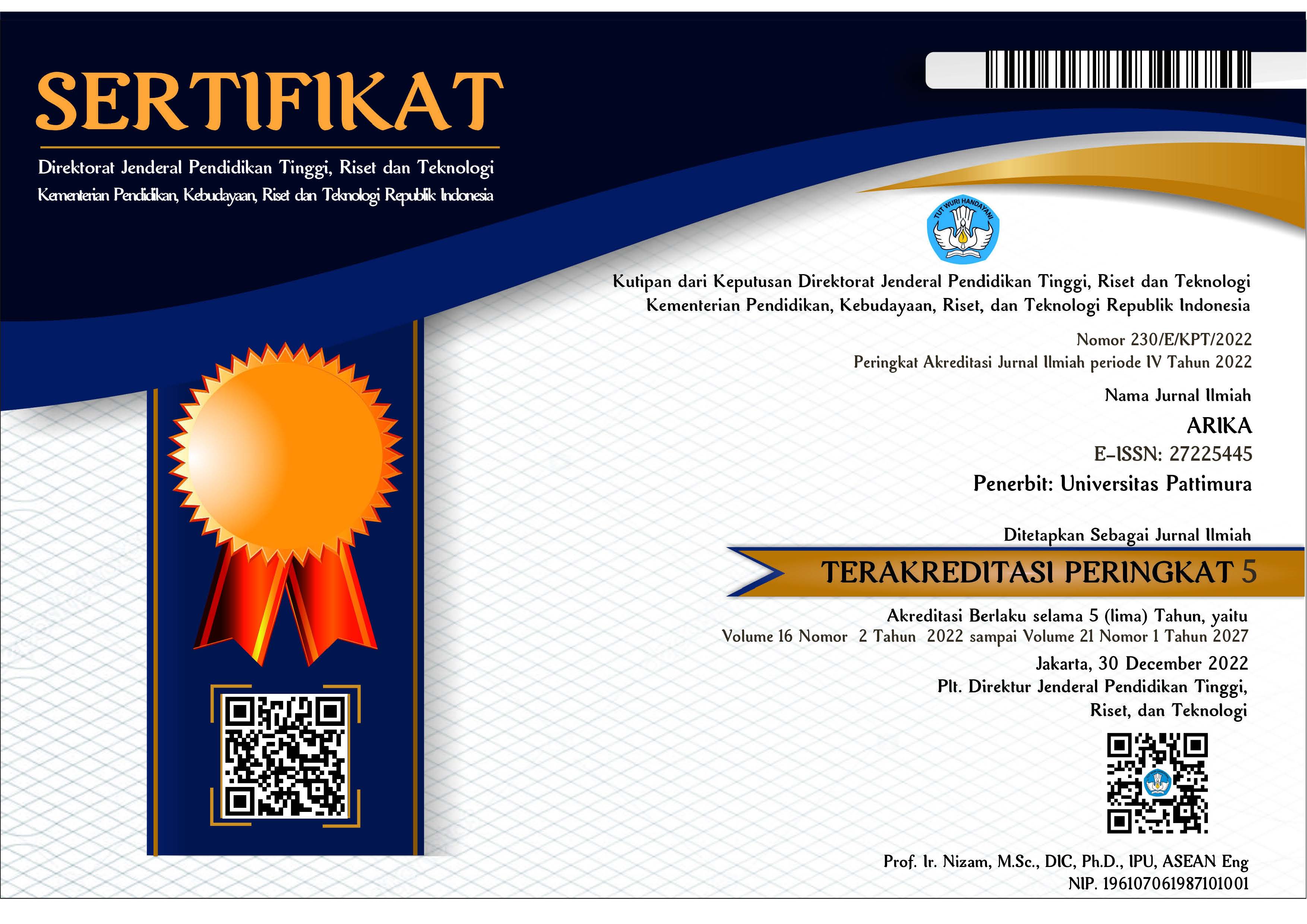Mempelajari Efektifitas Pemberian Pupuk NPK Terhadap Produktifitas Tanaman Buncis (Phasealus vulgaris L)
Abstract
The social demand for vegetables including beans as a source of vegetable protein increased in line with population growth increased from moment to moment. Fulfillment of its increasing demand has become a problem, especially in the fulfillment of the food with total area of cultivation is increasingly limited, so it is necessary to study the cultivation of an effort to improve productivity and product quality improvement vegetable beans. The study focused on the assessment of NPK fertilizer on some level / dose, which aims to determine the effectiveness of the fertilizer on the productivity of bean plants are maximized. The study was conducted in the village of Lateri for 3 months. Initial studies have shown that the degree of soil fertility in the study site varies because it is close to the river flow, the farther away from the riverbanks degrees diminishing soil fertility. Therefore, the design used was a randomized block design block (RAB) with 5 concentrations (levels) treatment that NPK0 (without fertilizer), NPK1 (5 g / m2), NPK2 (10 g / m2), NPK3 (15 g / m2 ), and NPK4 (20 g / m2). Each treatment was replicated in 4 blocks / different beds, in order to obtain 20 units of trial. Parameter productivity observed is, the diameter of the pod, pod length, pod weight and weight of pods in each bed. The results showed that the level NPK2 provide maximum results, namely: the average pod length = 16.8 cm, diameter pod average = 9.9 mm, weight of pods with an average of 44.6 grams. While ditches or block I pods produce an average weight of 0.41 kg maximum. The LSD with NPK2 level is an application of fertilizer most effectively to improve the productivity of bean plants.
Downloads
An author who publishes in the ARIKA Jurnal agrees to the following terms:
- The author retains the copyright and grants ARIKA journal the right of first publication of the work simultaneously licensed under the Creative Commons Attribution-ShareAlike 4.0 License that allows others to share the work with an acknowledgment of the work's authorship and initial publication in this journal.
- The author is able to enter into separate, additional contractual arrangements for the non-exclusive distribution of the journal's published version of the work (e.g., post it to an institutional repository or publish it in a book) with the acknowledgment of its initial publication in this journal.
- The author is permitted and encouraged to post his/her work online (e.g., in institutional repositories or on their website) prior to and during the submission process, as it can lead to productive exchanges, as well as earlier and greater citation of the published work (See The Effect of Open Access).










